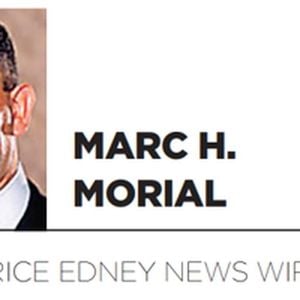On November 12, 2025, a chapter of American history quietly closed inside the U.S. Mint in Philadelphia. U.S. Treasurer Brandon Beach, accompanied by Treasury Secretary Scott Bessent, pressed the last five circulating one-cent coins, marking the end of more than two centuries of penny production. The moment, heavy with symbolism, was both a practical move and a poignant farewell to a coin woven into the fabric of American life since 1793.
The decision to halt penny production was not made overnight. According to the Daily Press, the Trump administration in early 2025 declared the penny "wasteful," with President Donald Trump ordering the Treasury Department to suspend its manufacture. This directive followed years of warnings from federal officials and economists that the penny cost far more to produce than its face value. In 2024, the U.S. Mint reported that each penny cost 3.69 cents to manufacture and distribute, a figure echoed by KLTV and KSNB Local4. The annual savings from ending production are expected to top $56 million, the U.S. Mint confirmed.
Why did it take so long? For nearly two decades, the penny has been minted at a loss. The cost crunch began in the mid-2000s, as prices for copper and zinc—its primary components—rose steadily. While the penny’s composition shifted in the 1980s from pure copper to 97.5% zinc and 2.5% copper, as noted by KLTV, the changes weren’t enough to keep production costs below one cent. In fiscal year 2024, the Mint still churned out about 3.2 billion pennies, more than half the coins it produced that year, even as digital payments surged and physical coins piled up in jars and drawers across the nation.
There’s no shortage of pennies—at least not yet. The American Bankers Association estimated in October 2025 that around 250 to 300 billion pennies remain in circulation. Most, however, never make their way back to stores or banks. Instead, they languish in homes, cars, and coin collections, a fact highlighted by BBC and echoed in interviews with local bankers and coin dealers. "The banks can’t get them either. One girl said she finally found one 2025 cent penny in change, and that’s the first person I’ve seen that actually [found] one in circulation yet," said Brad Rewerts, owner of The Coin Guy in Hastings, Nebraska, to KSNB Local4.
For now, pennies remain legal tender. Consumers can still spend them, businesses can accept them, and banks will continue to process penny deposits. The Federal Reserve will distribute existing supplies until they run out. But there’s no mistaking the shift: once a penny is lost, hoarded, or worn out, it won’t be replaced. As the supply dwindles, retailers may turn to rounding cash transactions to the nearest nickel—a practice already adopted in several McDonald’s locations and convenience stores facing penny shortages, according to USA Today and the National Association of Convenience Stores.
How will rounding affect everyday life? Studies from Canada and New Zealand, both of which retired their lowest-value coins in recent years, show that rounding tends to balance out over time, with no significant long-term impact on consumer prices. Still, the change raises questions. Kenneth Shafer, a Nebraska resident, wondered, "I don’t know how they’re going to be making change. I guess they’re just going to have to go to the next nickel probably, I don’t know. And then they’ll probably do away with that." Others, like Jesse Wright, questioned the timing: "They say it’s a lot more money to make a penny nowadays. They should have thought about that a long time ago. What’s going on guys? Come on government."
Businesses, especially small retailers and convenience stores, are bracing for adjustments. Some, like Stater Bros. grocery stores, have posted signs encouraging customers to pay with exact change or alternative payment methods. Others, like Lincoln Federal Savings Bank, remain steadfast in their support for the penny. "Nothing here changes for customers; we still have a coin counter that will still count their pennies," said bank manager Brandy Lang, adding, "And we proudly promote the penny as it is part of our logo. So, the penny for us is not going anywhere."
The end of the penny’s production is not just a financial decision—it’s a cultural milestone. Authorized by the Coinage Act of 1792, the penny first appeared in 1793 as a large copper cent featuring Liberty. The iconic Lincoln cent, introduced in 1909, was the first regular U.S. coin to feature a real person. For generations, the penny has been a symbol of thrift, childhood learning, and good luck. Phrases like "a penny for your thoughts" and "see a penny, pick it up" may soon fade into nostalgia, as observed by Daily Press reporter Rene Ray De La Cruz.
The U.S. last eliminated a circulating coin in 1857, when the half-cent was discontinued. Now, with the penny’s retirement, the U.S. joins countries such as Canada, Australia, and New Zealand, all of which phased out their lowest-denomination coins as production costs outpaced their purchasing power. Canada’s experience in 2012 included a multi-year public education campaign and efforts to reclaim and recycle billions of pennies, as reported by Business Insider.
What about collectors? The U.S. Mint confirmed that the last five circulating pennies struck on November 12, 2025, will be preserved and auctioned, likely attracting fierce bidding from numismatists. The Mint will continue to issue special collector edition pennies, but these will be produced in limited quantities and will not be legal tender. For those who cherish the coin’s history, these final pieces represent both an ending and a new chapter.
Looking forward, Congress is considering legislation to formalize the penny’s end and require all cash transactions to be rounded to the nearest nickel. Some economists have speculated that the nickel could face similar scrutiny in the future, given that it too costs more to produce than its face value. For now, though, the machines at the Philadelphia Mint have been converted to produce nickels, dimes, and quarters, as directed by President Trump’s February 2025 social media post.
The penny’s departure is, in many ways, a reflection of how Americans pay in 2025—more cards, fewer coins, and a growing acceptance of digital transactions. Yet, for all its economic logic, the end of the penny stirs memories of childhood piggy banks, lucky finds on sidewalks, and the sense that every cent, no matter how small, had its place. The final strike has been pressed. What remains in pockets, jars, and drawers will continue to circulate, a quiet reminder of a coin that, for more than two centuries, was always worth more than just one cent.





